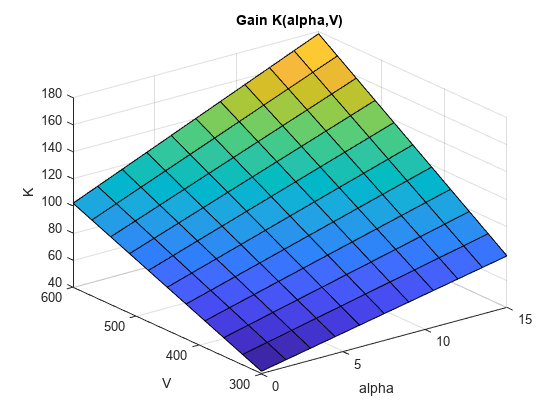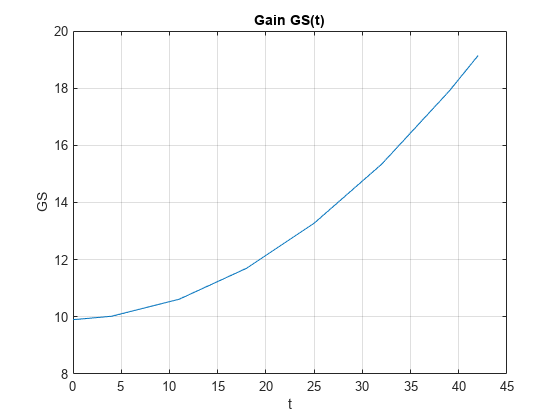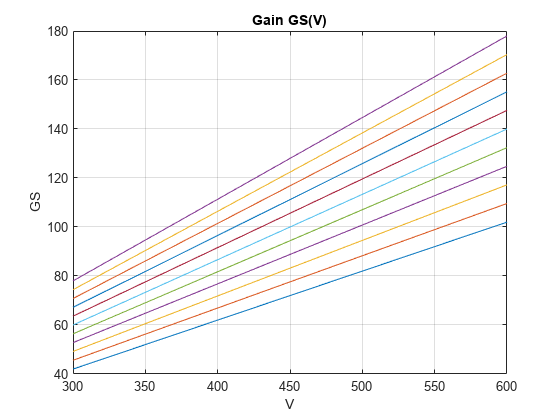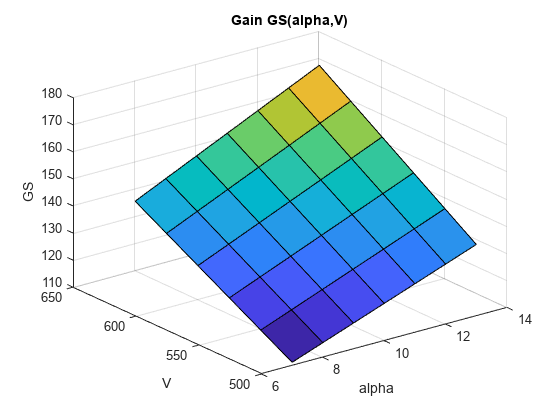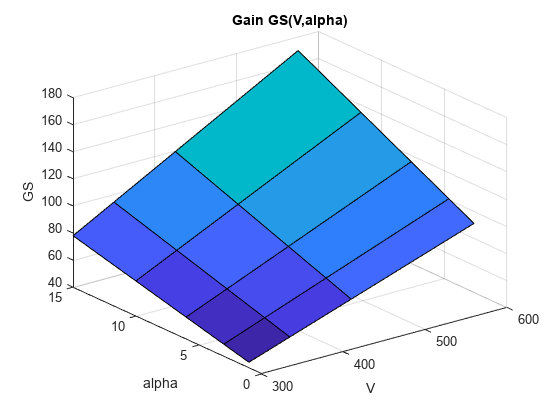viewSurf
Visualize gain surface as a function of scheduling variables
Description
viewSurf( plots
the values of a 1-D or 2-D gain surface as a function of the scheduling
variables. GS)GS is a tunable gain surface that
you create with tunableSurface. The plot uses
the independent variable values specified in GS.SamplingGrid.
For 2-D gain surfaces, the design points in GS.SamplingGrid must
lie on a rectangular grid.
viewSurf(
plots the gain surface GS,xvar,xdata)GS at the scheduling-variable values
listed in xdata. The variable name xvar
must match a scheduling variable name in GS.SamplingGrid.
However, the values in xdata need not match design points in
GS.SamplingGrid.
For a 2-D gain surface, the plot shows a parametric family of
curves with one curve per value of the other scheduling variable.
In the 2-D case, the design points in GS.SamplingGrid must
lie on a rectangular grid.
viewSurf(
creates a surface plot of a 2-D gain surface evaluated over a grid of scheduling
variable values given by GS,xvar,xdata,yvar,ydata)ndgrid(xdata,ydata). In this case, the
design points of GS do not need to lie on a rectangular grid,
and xdata and ydata do not need to match
the design points.
Examples
Input Arguments
Version History
Introduced in R2015b
